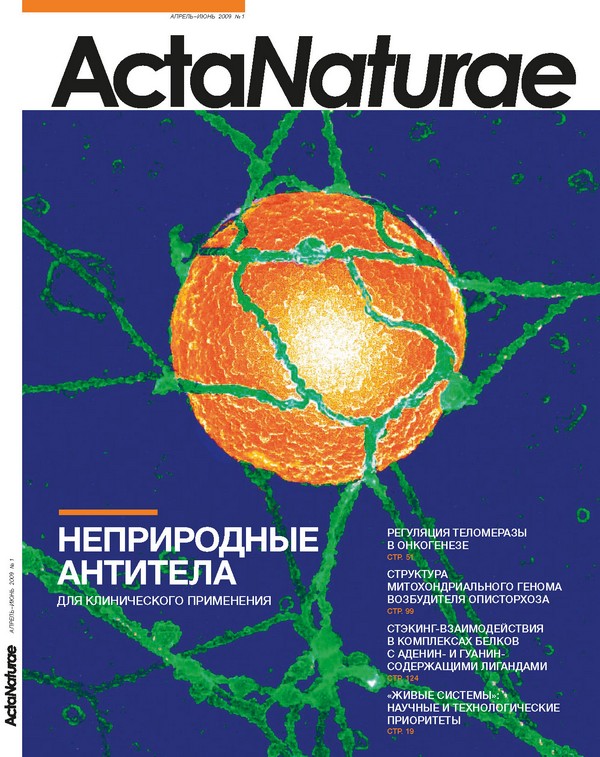Полный текст
Glial-derived neurotrophic factor (GDNF) belongs to the GDNF-similar ligand (GFL) family, which includes neurturin (NRTN ), persipin (PSPN), and artemin (ARTN ). All of these are necessary for the survival of the dopaminergic neurons of the mesencephalon, as well as for peripheral sensory and sympathetic neurons (with the exception of PSPN) [
12,
14]. In addition, beyond the nervous system, GDNF fulfills the following important functions: it regulates the differentiation of spermatogonia and is needed for the embryonic development of kidneys [
14]. All representatives of the GFL family influence the cells through bonding with the heteroreceptor complex, which contains the RET receptor and GFRα co-receptor [
14]. The specificity of the RET receptor activation, in relation to different factors of the GFL family, depends on the GFRα type 110 | Acta naturae | № 1 2009 RE SEARC H ART ICLES contained in the cells. GDNF, NRTN , ARTN , and PSPN have strong affinities to GFRα1, GFRα2, GFRα3, and GFRα4 coreceptors, respectively. GFL binding with the “alien” GFRα is possible, but it happens with less efficiency. It has been shown that GDNF increases the survival rate of the dopaminergic neurons of rats’ embryonic mesencephalon in a specific way, making the dopamine metabolism stronger; it also increases the differentiation level of tyrosine hydroxilasepositive cells (TH-), raising the axons’ growth and increasing the dimensions of the cell’s body. Analogous effects have also been observed in rats’ mesencephalon dopaminergic neurons [
12]. Similar results have been obtained on fruitfly transgenic lines. It appeared that a distinct synthesis of tyrosine hydroxilase has been found in the fruit fly’s lines bearing the GDNF gene and in differentiating nerve cells, and the fruit fly’s cells bearing the GDNF gene were actively producing acetylcholinesterase [
2,
3] Embryonic SCs are able to self-renew and differentiate to the derivatives of all three primary embryonic leaves both in vitro and in vivo. Most importantly, in the course of the embryonic SCs, the differentiation of the order of expression and the tissue-specific genes correspond to the order of these processes during the development of the organism in vivo [
7].







